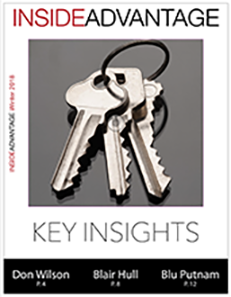July 2013
DSFs provide capital-efficient ways to access interest rate swap exposure using standardized contracts. With four key benchmark maturities (2-, 5-, 10- and 30-Year tenors), you can cover benchmark points on the yield curve.
Get the Most Out of Your Margin
- Futures-style margining featuring two-day period of risk
- Automatic risk offsets (spread credits) with liquid Eurodollar and Treasury futures and options
- Product comparison examples available on the CME Group web site show how one could achieve 57%-73% savings on swap spreads by combining DSFs and IRS portfolio margining
Increasing Buy- and Sell-Side Participation – Open Interest Above 54,000
Market participation has seen robust growth since the December 3, 2012 launch, especially in early June- achieving 29,996 in record daily volume on June 5 and 54,700 in open interest (OI) on Wednesday, June 12.
That makes DSFs our second most successful Interest Rate product in OI terms during the first six months of trading–better than Eurodollar futures and all Treasury products in the CME Group Interest Rate complex except for Ultra T-bond futures.
Rolling the Contracts
The March roll liquidity proved robust and consistent from mid-February through the last minute of the last trading day on March 18, with 10-Year DSF averaging $50 M notional at a bid/ask spread of 0.21 bp equivalent:
Get Started Today at www.cmegroup.com/dsf
Visit the DSF page on the CME Group web site for trading resources, strategy papers and a volume and OI tracker updated weekly
These products are listed by and subject to the rules of CBOT
Futures trading is not suitable for all investors, and involves the risk of loss. Futures are a leveraged investment, and because only a percentage of a contract’s value is required to trade, it is possible to lose more than the amount of money deposited for a futures position. Therefore, traders should only use funds that they can afford to lose without affecting their lifestyles. And only a portion of those funds should be devoted to any one trade because they cannot expect to profit on every trade.
Swaps trading is not suitable for all investors, involves the risk of loss and should only be undertaken by investors who are eligible contract participants (ECPs) within the meaning of section 1(a)18 of the Commodity Exchange Act. Swaps are a leveraged investment, and because only a percentage of a contract’s value is required to trade, it is possible to lose more than the amount of money deposited for a swaps position. Therefore, traders should only use funds that they can afford to lose without affecting their lifestyles. And only a portion of those funds should be devoted to any one trade because they cannot expect to profit on every trade.
The Globe Logo, CME®, Chicago Mercantile Exchange®, and Globex® are trademarks of Chicago Mercantile Exchange Inc. CBOT® and the Chicago Board of Trade® are trademarks of the Board of Trade of the City of Chicago. NYMEX, New York Mercantile Exchange, and ClearPort are trademarks of New York Mercantile Exchange, Inc. COMEX is a trademark of Commodity Exchange, Inc. CME Group is a trademark of CME Group Inc. All other trademarks are the property of their respective owners.
The information within this presentation has been compiled by CME Group for general purposes only. CME Group assumes no responsibility for any errors or omissions. Although every attempt has been made to ensure the accuracy of the information within this presentation, CME Group assumes no responsibility for any errors or omissions. Additionally, all examples in this presentation are hypothetical situations, used for explanation purposes only, and should not be considered investment advice or the results of actual market experience. All matters pertaining to rules and specifications herein are made subject to and are superseded by official CME, CBOT, NYMEX and CME Group rules. Current rules should be consulted in all cases concerning contract specifications.






